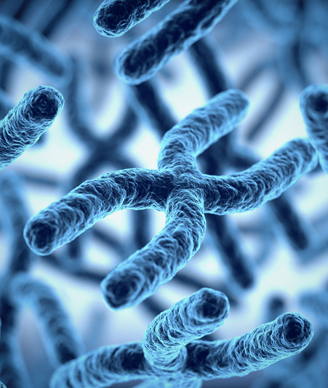Five New Risk Loci Identified for Gliomas
A new genetic analysis found five new genetic variants that raise the risk for gliomas. One of the five was associated with a sharply increased risk for glioblastoma.
Image © koya979 / Shutterstock.com

A new genetic analysis found five new genetic variants that raise the risk for gliomas. One of the five was associated with a sharply increased risk for glioblastoma (GBM).
“We believe our study is the largest ever conducted of the genetics of glioma-the most common form of brain cancer-and it provides firm evidence that susceptibility to the disease is in part inherited,” said Richard S. Houlston, MD, PhD, of the Institute of Cancer Research in London, in a press release. Gliomas account for about 40% of all primary brain tumors.
In previous genome-wide association studies, single-nucleotide polymorphisms (SNPs) at eight specific loci have been identified. The new study aimed to further characterize genetic susceptibility to glioma, using a meta-analysis of four genome-wide association studies involving 4,147 cases and 7,435 controls and a subsequent genotyping of 1,490 additional cases and 1,723 additional controls. The results were published online ahead of print in Nature Communications.
The analysis found five novel glioma susceptibility loci: one associated with GBM was located at 12q23.33, and non-GBM-related loci were found at 10q25.2, 11q23.2, 12q21.1, and 15q24.2.
Specific SNPs were associated with glioma subtypes: for example, the GBM SNP rs3851634 was associated with 10q-deleted glioma (P = .016). For non-GBM SNPs, rs11196067 was strongly associated with grade II glioma (P = 3.2 x 10-5) and with TP53 non-mutated glioma (P = 5.82 x 10-5). Another SNP, rs648044 was associated with grade II oligodendroglioma (P = .026) and with 10q non-deleted glioma (P = .006); rs1801591 was associated with grade II astrocytoma (P = .001) and with IDH1/IDH2-mutated glioma (P = .005). Several other such associations were found as well.
The authors wrote that the risk loci identified so far, both in this study and in previous work, account for 27% and 43% of the familial risk of GBM and non-GBM tumors, respectively. The new loci identified account for 0.8% and 7.6% of the risk, respectively. They noted that a large number of variants likely remain to be discovered.
“Our study sheds fresh light on the biology of gliomas, and could provide clues to why the disease develops, and how it could treated or prevented,” Houlston said.